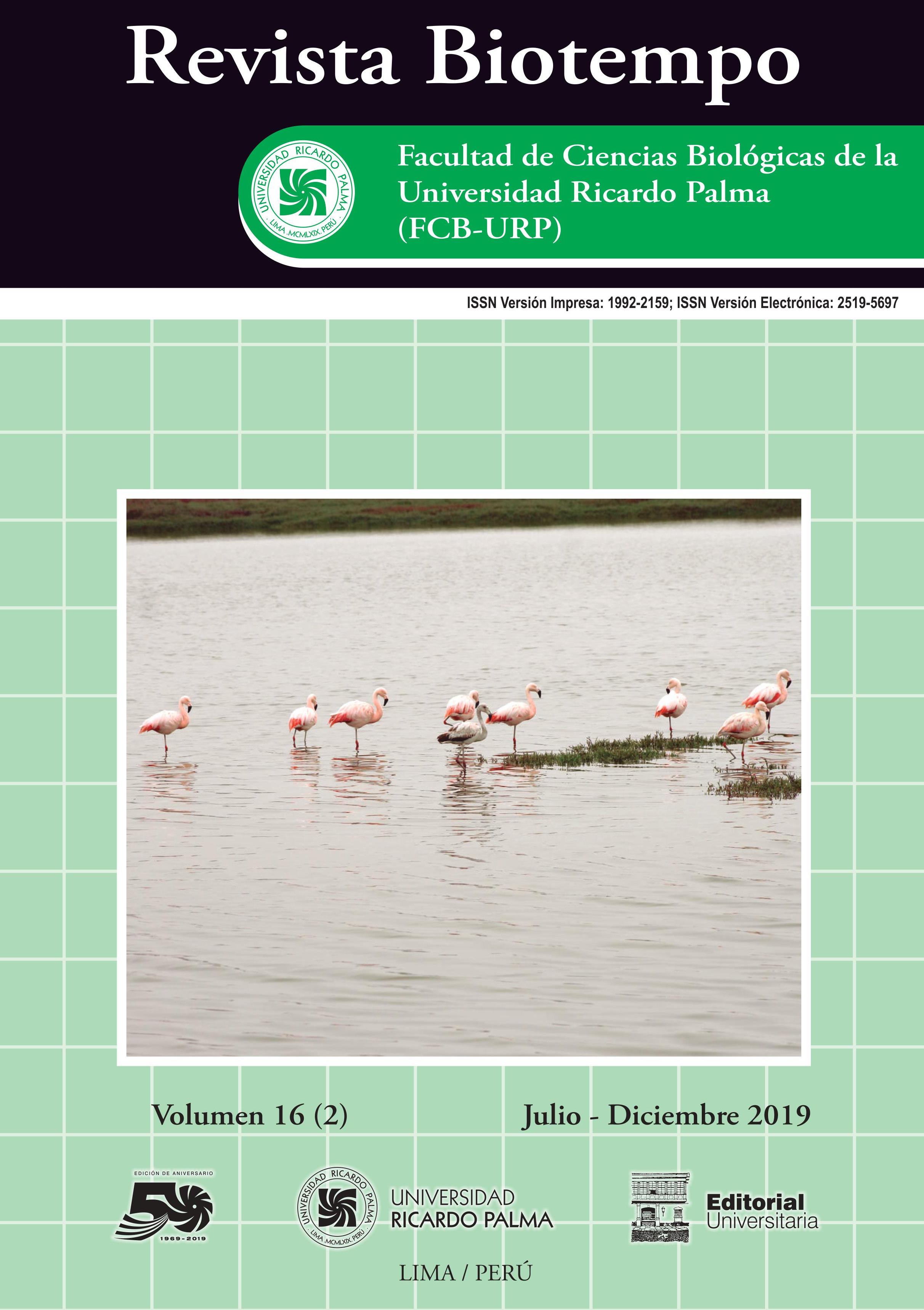SPATIAL AND TEMPORAL DISTRIBUTION OF BIRDLIFE AT THE INTERNATIONAL AIRPORT JORGE CHÁVEZ CALLAO-PERÚ
DOI:
https://doi.org/10.31381/biotempo.v16i2.2537Abstract
Around airports, there are external conditions that turn out to be attractive for birds that include wetlands, grasslands, crops, mangroves, organic waste from human activities, and taxiways for aircraft which are permanent source for bird transit. Jorge Chávez International Airport (AIJCh) located in Lima, Peru presents many of the above mentioned factors, so the evaluation of avian fauna is necessary. The objective of this work is to perform the spatial and temporal evaluation through surveys between November 2015 and July 2016 and use the Avian Risk Assessment Index (IERA in Spanish) to detect those species that generate the greatest risk. The groups of species that presented greater abundance were the gulls (Family Laridae) with a maximum reported of 5189 individuals and the “black vulture” (Coragyps atratus (Bechstein, 1793) with a maximum reported of 371 individuals. Both groups were more active from the first hours of the morning (9:00 am) and in the mid-afternoon (4:00 pm to 5:00 pm). In addition, these groups also presented higher risk according to the IERA. This index works efficiently as a diagnostic tool for potentially dangerous bird species for air navigation.










